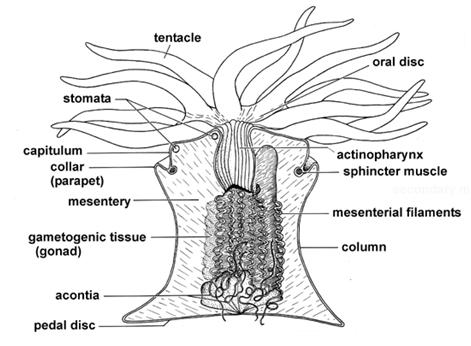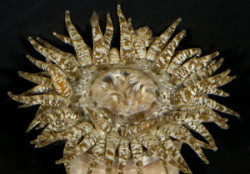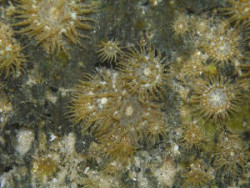Anthozoans
Anthozoans are a class of animals belonging to the larger taxonomic group Cnidaria and are exclusively aquatic. They include many colourful organisms such as the reef building ‘stony’ corals, sea anemones, tube-dwelling anemones, sea fans and sea pens. Unlike other cnidarians (such as the jellyfish), Anthozoans live their entire life as polyps attached to a substrate. The name anthozoa means ‘flower like’ and refers to the appearance of the polyp which is a simple tubular structure crowned with a ring of tentacles. There are approximately 7,500 species of anthozoan world wide ranging in habitat from the intertidal to the deep sea. Scientists believe that anthozoa are an extremely old class of organisms, originating in the Pre-cambrian era (> 600 million years ago). However, this is still a highly contested theory.
The main group of anthozoans found in Waikato estuaries are the tube-dwelling anemones or cerianthids. These are physically very similar to other sea anemones but, as their name suggests, tube-dwelling anemones have a fibrous tube like structure below their tentacular crown. The organisms are solitary and can withdraw inside their tube for protection. Sea anemones are carnivores that eat fish, mussels, zooplankton (like copepods, other small crustaceans, tiny marine larvae), and worms. They have few natural predators. Cerianthids live exclusively in soft sediment systems and are often buried, making them difficult to see. They are often found attached to the shell of common bivalves, particularly cockles. Information on the most common anthozoan species we monitor in is given below.







To ask for help or report a problem, contact us
Tell us how we can improve the information on this page. (optional)